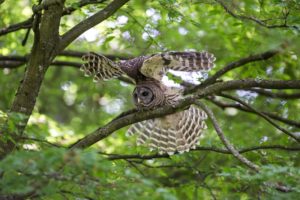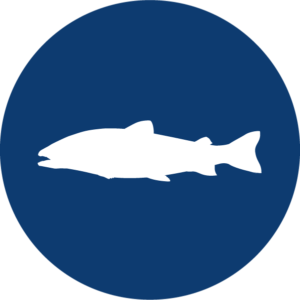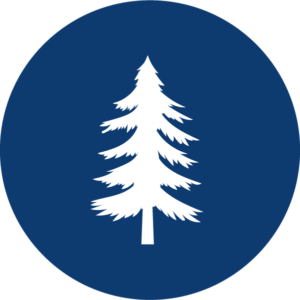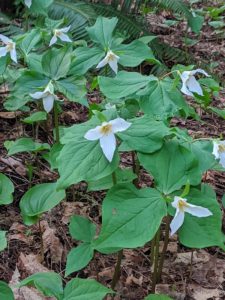
 Your Mission…
Your Mission…
Search out of the three life essentials and send us a photo of one! Imagine you are a small animal new to these woods here to explore. It is your task to find the three life essentials: shelter, water and food. Seek hidden hidy-holes and learn about how the forest provides for wildlife and discover wild foods like mushrooms, lichens and tree cones.
![]()

 Welcome to Watershed Park!
Welcome to Watershed Park!
Once giant, ancient Western red cedar trees filled these woods, some living to be 1000 years old! Then, more than 100 years ago these woods were logged and now we see the remnant old stumps that stood once as tall trees. Washington State has a long history of deforestation through logging and farming.
See if you can find left over clues from past logging. How many of their decaying stumps and fallen trees you can find? These remnant stumps and logs are called nurse trees or nurse stumps because they provide nurseries for seeds to grow new trees. They are also very important for adding nutrients to the soil and they provide homes for insects and small animals. Can you figure out who would use these?
Learn more about Watershed Park.

 Shelter, a Life Essential
Shelter, a Life Essential
As you go, look for large trees or dead trees as both provide habitat to many animals. Also keep an eye out for really tall trees without their tops.
Why don’t those trees have tops? Who do you think might live up there?
Some of these trees are dead or dying and are called snags. Snags are rotting, dead standing trees and dead trees lying on the ground. Snags provide homes for many animals; insects for birds to eat, homes for salamanders and nesting places for birds, native squirrels and racoons. Some trees are still alive with wind broken tops. The trees with wind broken tops provide homes for owls, squirrels and racoons and perches for owls and eagles. They are all part of a healthy forest. Eventually these decaying trees provide essential nutrients to the soil for other plants and trees to use.
Did you know?
In many of our forests, decaying logs and stumps are rare because they have been cleared away? It can take 500-1000 years to grow a large tree that falls and becomes a dead log in the forest. Please do not climb on or harm rotting dead stumps and logs as this habitat cannot be replaced in our lifetime.
If you were a forest animal where would be a cozy place to sleep?
Remember to look high and low for holes called cavities that an animal can use as shelter. Some shelter holes may be at the base of a tree, along its trunk or in a broken top!
What has been been eating these dead trees?
Perhaps a pileated woodpecker! We can tell by the holes with a rectangular pattern instead of round.


 Water, a Life Essential
Water, a Life Essential
Throughout this park see if you can find the many streams and springs where an animal can find water to drink. Deep in the park Moxlie Creek percolates out of the ground at the upper spring headwaters . It is one of the largest spring basins in our region and gently flows through the sandy upper basin and shady, wet loving plants of salmonberry, skunk cabbage and devils club. A large mature forest canopy towers over much of the stream where multiple smaller springs and tributary streams flow into it, swelling its banks and increasing the streams water volume and flow.

Did You Hear That?
Before the intersection of the McCormick Street trail, you may be lucky to see or hear the baby barred owls and their parents. Barred owls are the second largest owl in the Pacific Northwest. Once a resident only of the eastern portion of the United States, its habitat restricted to forested lands it was once separated from the western U.S by large expanses of prairie lands. Now, as prairie lands become dominated by forests, the barred owl has successfully moved its way westward.

 The Origin of Moxlie Creek
The Origin of Moxlie Creek
Seek the origin of Moxlie Creek. About halfway around the trail, you will see where the trail goes straight onto the McCormick Street trail entrance, while the main trail curves to the right. Take the 10 minute detour up the McCormick Street trail through the gallery of big leaf maples to find the fence with the sign to the springs. You will not be able to get to the spring as it is deep in the gully but Moxlie Creek comes right out of the ground at the bottom of the gully as a small stream and flows all the way to Puget Sound!
FACT! Moxlie Creek originates at an artesian spring in Olympia’s Watershed Park and flows northerly through the heavily forested and undeveloped park for about one mile before being piped under most of the City of Olympia before spilling into Puget Sound.

 Food, a Life Essential
Food, a Life Essential
What kind of foods have you seen along the way that an animal may eat? Cones from trees, seeds, berries, fungi-mushrooms, lichen and plants may all be eaten by animals. There are many food sources in the forest. See how many you can find!
Did you know?
All trees with needles have cones, and most trees with cones and needles are evergreens—but not all of them. Hundreds of species of trees with cones are found throughout the world, and these trees are known as conifers.
Conifers are trees that produce cones to protect their seeds. The cones have many scales to shelter the seeds. Eventually the scales open and the seeds fall to the ground, to grow where they fall, or to be carried away by wind, birds, squirrels or other small animals.
Conifers make up the division Pinophyta, also known as Coniferophyta and Coniferae. Some commonly recognized conifer species include: Western red cedar, hemlock and Douglas fir.
Some conifers have short needles and some long, and some have flat leaves like scales. Cones may be tiny or large, and they can stand up, hang down or be attached along the entire length of the twig.
FACT! Most conifers are evergreen but some are deciduous, shedding their needles in the fall. Larches, dawn redwoods and bald cypresses are examples of deciduous trees with cones.
Did you know? Lichens are not plants!

 Can’t Touch This!
Can’t Touch This!
Next, let’s find somewhere where it gets wet off the trail and has tall spikey plants with very large leaves in late spring, summer and a cone of red berries in later summer. DON’T TOUCH THEM! Their spines are on the stem and leaves and they are very painful.
What is this plant?
Devils club! A beautiful plant that grows where the soil is mucky wet and those spikes protect it from being eaten. People also use it for medicinal properties.

 Let’s Find a Bench and Rest
Let’s Find a Bench and Rest
Have you seen any flowers? Keep looking! In spring there are trilliums along the trail and a large patch by the bench. Please do not pick the trillium or any flowers in the park. Trilliums are fragile and the plant does not survive picking.

 We’re on the Home Stretch
We’re on the Home Stretch
Can you find log that is leaning over the trail? The plants growing out of its top is red huckleberry! And the stuff covering the old bark is moss, fungus and lichens! What’s the difference between mosses and lichen? Find out here!
More info on lichens visit https://www.nybg.org/bsci/lichens
Congratulations!
You have completed your mission to find one the three life essentials! Don’t forget to login to the Goose Chase App and submit your photo for this mission to collect your park specific sticker!
To return to your car, just follow the trail!
